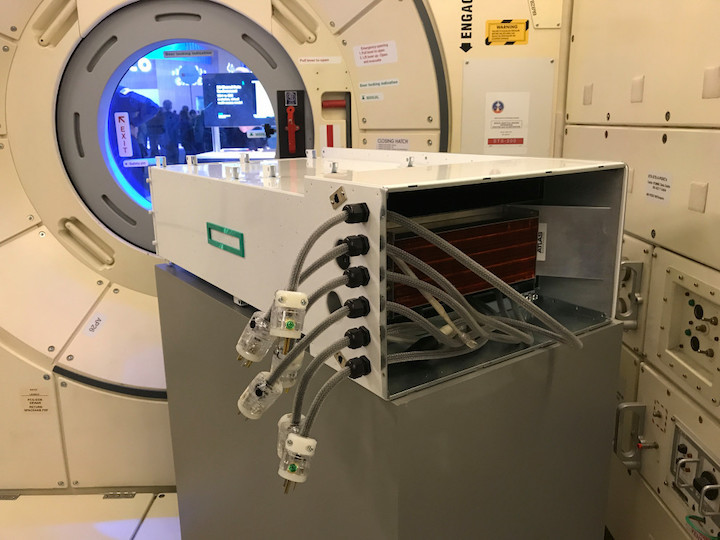3.11.2018

Last year, HPE successfully built and installed a supercomputer on the International Space Station that could withstand the rigors of being in space. Today, the company announced that it is making that computer available for earth-based developers and scientists to conduct experiments.
Mark Fernandez, who has the lofty title of America’s HPC Technology Officer at HPE, says that the project was born with the idea that if we eventually go to Mars, we will need computers that can withstand the travel conditions of being in space for extended periods of time.
What’s more, because space computers have traditionally lacked the sophistication of earth-based computers, they conduct some of the work in space and then complete the calculations on earth. With an eye toward a Mars trip, this approach would not be feasible due to the distances and latency that would be involved. They needed a computer that could handle processing at the edge (in place) without sending data back to earth.
The original idea was to build a supercomputer with the state of the art off-the-shelf parts as and install it on the ISS as an experiment to see if this could work. They built the one teraflop computer in the summer of 2017 and launched it into space on a SpaceX rocket. The computer was built with Intel Broadwell processors, which Fernandez says were the best available at the time.
The first step was to see if the computer they built could handle the launch, the cold temperatures of waiting to be on-boarded, the solar radiation and generally uncommon conditions of being in space.
Once installed, they needed to figure out if this computer could operate in the power and cooling environment available onboard the ISS, which is not close to what you would have in earth-based datacenter with a highly controlled environment. Finally, once installed, would the computer operate correctly and give accurate answers.
The special sauce here was a package of software they call Hardened with Software. “We wrote a thin, lightweight way suite of software to quote-unquote, harden our systems of software, so you can take state of the art with you,” he said.
The computer was launched in August 2017 and has been operating ever since, and Fernandez says that it has worked according to plan. “So we’ve achieved our signed, dated and contracted mission. We have a one teraflop supercomputer on board the International Space Station with Intel Broadwell processors.” He says that supercomputer has flown around the earth 6000 times since launch.
The company now wants to open this computer up as a kind of service to earth-based developers and scientists to experiment with high-latency jobs that would have required some processing on earth. With the HPE Spaceborne Computer available to use, they can see what processing this information at the edge would be like (and if it would work). The computer will be in operation until some time next year, and in the meantime interested parties need to apply to HPE and NASA to get involved.
Quelle: Tech Network
